
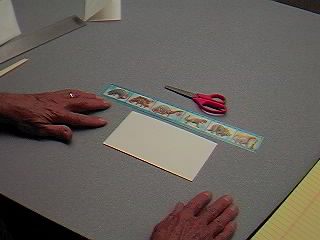 |
1. Begin by gathering a small envelope (approximate dimensions are 3 5/8 by 6 1/2 inches or 9.2 by 16.5 cm), a straight edge (1 ft or 30 cm ruler is fine), and a pair of scissors. |
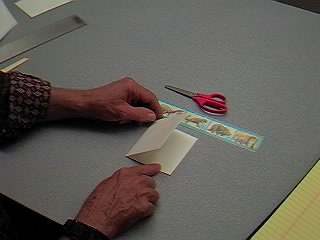 |
2. Fold envelope in half left to right or right to left and form a sharp crease. Flatten the envelope again. |
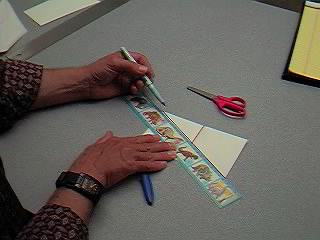 |
3. Make a crisp diagonal line from the upper left corner to lower right corner of the envelope. This line may be scored into the paper using the blunt tip of the scissors, with other blunt metal implements such as a nail file, or with a pen or pencil. Scoring this line will make it easier to fold. Sharply fold diagonally along the line. |
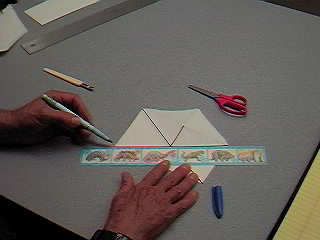 |
4. Similarly, make a crisp diagonal line from the upper right corner to the lower left corner and sharply fold along the line. |
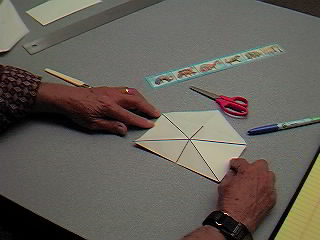 |
5. The folds on the envelope should look like this. |
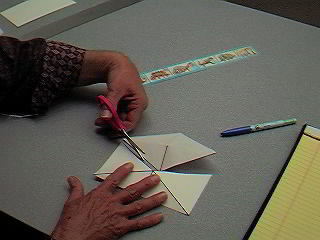 |
6. Use the scissors to cut from the upper corners to the center of the envelope. Remove and recycle the portion including the flap. The useable part looks like a rectangle with a triangle taken out of the top. |
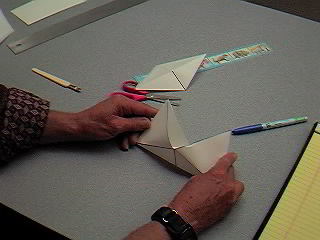 |
7. Open the envelope and begin to fold it open along the "vertical" fold you first made (photo 2). |
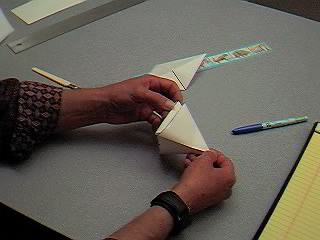 |
8. Tuck the upper left corner of the envelope into the inside lower right corner. (Alternatively, tuck the upper right corner into the inside lower left corner). |
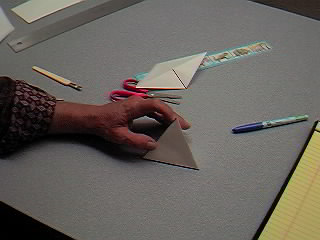
| 9. Voila! You now have a tetrahedron. |
Why does the small envelope work to make a tetrahedron, but a business envelope does not? What do the envelope and the tetrahedron have to do with the square root of three?
To make a kaliedocycle to decorate with earthquake-education scenes, make six tetrahedra and go to kaliedocycle instructions.

Created by Dave Love and Bill Haneberg
Photos by Virgil Lueth
last modified: 25 April, 2022